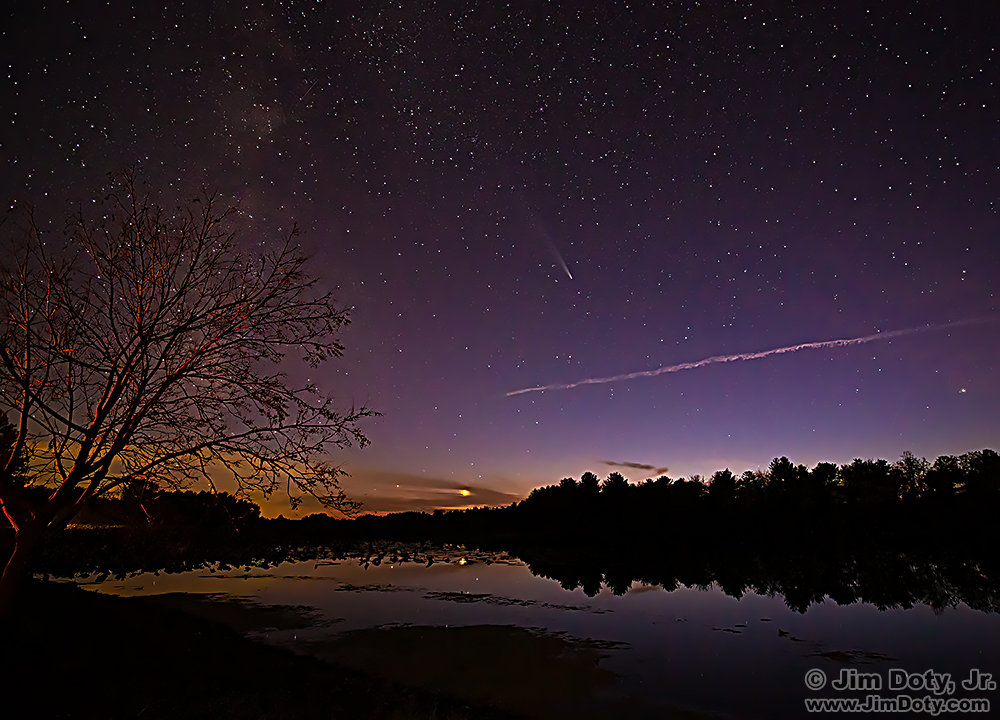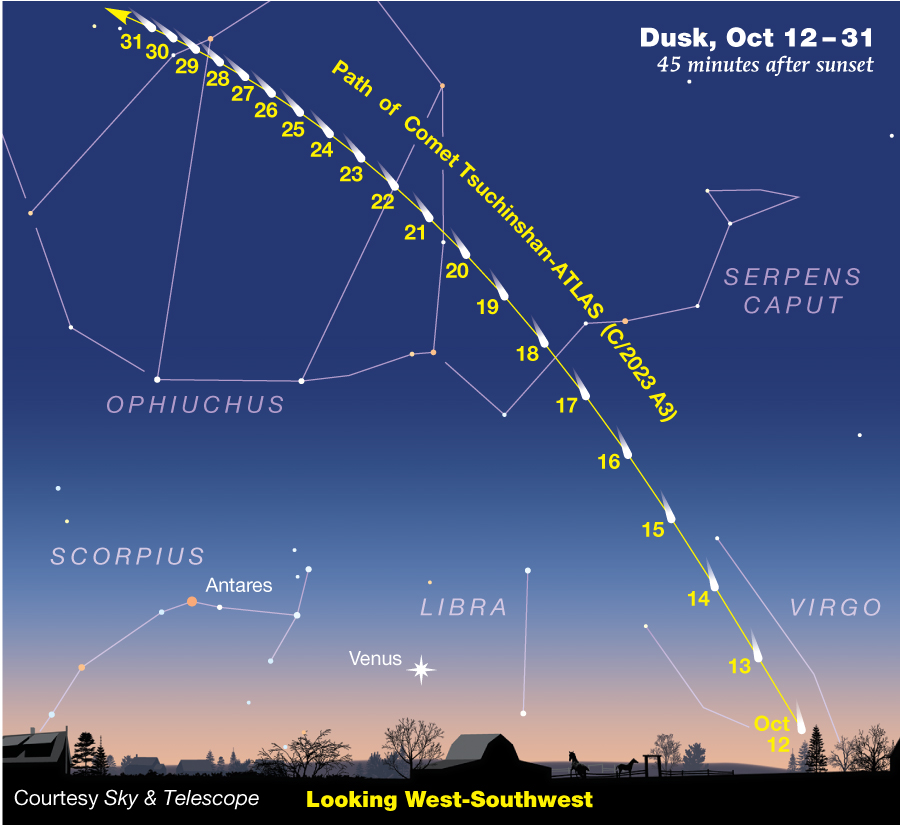Comet C/2023 A3 over Lake La Shane, Iowa. Venus is at the lower left. A jet left a vapor trail that is slowly dissolving. This is cropped from the original image. The whole image is next.

Comet Tsuchinshan-ATLAS, also called C/2023 A3. Lake LaShane. Uncropped. Click the image to see a larger version.
Finding the Comet
The comet is above and to the right of Venus. Venus will be in the southwest. You probably won’t be able to see the comet. Use a lens with a focal length between 24 and 50mm and point your camera so Venus is in the bottom left-center or bottom center area of the frame. Later in the month put Venus in the bottom right area of the frame.
Time of Day
Go out about 45 minutes after sunset. Here in south central Iowa 7:15 pm CDT was a good time to start. By 7:45 pm Venus was getting pretty low in the sky and I wanted Venus in my image.
Lens Focal Length
The longer the lens focal length you use, the bigger the comet will be, but you will have less sky area and less stars. A shorter focal length will give you more sky and stars but a shorter comet. The photo above was photographed at 17mm so there is a lot of sky but a smaller comet. Experiment with different focal lengths from 17mm up to 40 or 50 mm. If this is your first time doing this I suggest you start with a focal length around 24 mm and then try a longer focal length like 40 or 50 mm which will give you a bigger comet.
Star Trailing
To avoid objectionable star trailing in your image, follow the rule of 600. Divide 600 by your lens focal length to get the longest shutter speed you can use with that lens and not have too much star trailing. For a 20mm lens, 600/20=30, so 30 seconds is your longest shutter speed. For a 50mm lens, 600/50=12, so 12 seconds should be your longest shutter speed. For a 24 mm lens, 600/24=25 so 25 seconds should be your longest shutter speed.
Focusing on Infinity
This is your biggest technical challenge. Your camera can’t autofocus on the night sky, and at night it is too dark through your camera’s viewfinder to manually focus.
If your lens isn’t focused on infinity, your stars will be little round blobs instead of points of light. So focusing your lens on infinity is important. This article tells you how to do that. One simple way to do this is to show up early, focus on the distant horizon, turn off autofocus and don’t touch the focus ring for the rest of the night. Don’t touch the zoom ring either. Don’t forget, if you are using a zoom lens, if you change the focal length you change the focus point. If you are focused on infinity at 24mm and you zoom to 40mm, the lens is no longer focused on infinity so you will need to refocus.
Exposure
Try a lens aperture of f/5.6 (or at least one stop smaller than wide open) to avoid lens aberrations and weird looking stars in the corners of the frame. Set your ISO to 3200 or 6400, and try exposure times of 8 seconds, 15, seconds, and (if you are using a really wide angle lens) 30 seconds. For this image I used f/5.6, 15 seconds, ISO 6400, but the best exposure for your camera might be a little different. Every camera sensor responds a little differently in low light/long shutter speed situations. Don’t be afraid to experiment with different exposures. The exposure that looks best on the back of your camera may not be the one that looks best when you look at your photos on your computer.
Exposure Info: Canon 5D Mark III, Canon EF 17-40mm f/4 lens at 17 mm. f/5.6, 15 seconds, ISO 6400.


